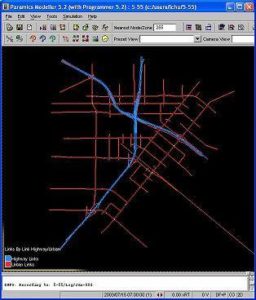1. High Priority Chokepoint Evaluation
Considering the limitations in using conventional static modeling approach, Paramics simulation model was used as an evaluation tool for cost-benefit analysis for 12 chokepoint improvement projects proposed by Caltrans District 12.
2. Paramics Simulation Support for I5/SR55 Project Study
The project aims to develop a micro-simulation model for he I-5/SR-55 interchange using Paramics. The baseline network and alternatives system was evaluated in terms of corridor travel time, speed, vehicle miles traveled, vehicle hours traveled, flows, weaving, and queue lengths.
*Map picture source: Google


3.Benefit analysis of selected Orange County Freeway improvement projects
The purpose of this study is to analyze the benefits from four highway improvement projects using microscopic simulation. The microscopic simulation model used in this study is Paramics, which is a scalable, ITS-capable, high-performance microscopic traffic simulation package developed in Scotland. These four projects include:
Performance measures used in the analysis include vehicle miles traveled, vehicle hours traveled, mainline and HOV speed and throughput etc. The overall procedure to conduct this study is as follows: